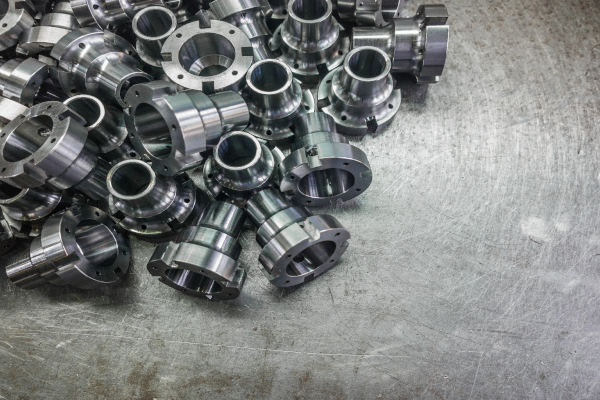
Latem Industries has mastered a set of manufacturing processes that allow us to finish huge quantities of parts at once. Industries such as medical, aerospace, furniture, automotive, agricultural and 3D printing all use these processes as a means to get the precise finish they’re after. The most common term for this work is ‘mass finishing,’ but we like to boil it down to a much simpler idea: problem-solving.
Mass finishing is all about solving the problems that come up during mass production, including imperfections like burrs and contaminants like rust or oil. It can be used to radius, deburr, remove rust, polish, break edges, harden or clean manufactured metal parts.
Mass finishing methods include:
Barrel tumbling and vibratory finishing, using cyclical motion to move large quantities of parts against one another and in some cases an added abrasive. This finishing media can be made from many materials, including aluminum, ceramic, walnut shells and steel.
Shot blasting and peening, throwing tiny steel pebbles (called shot) at the parts with incredible velocity.
Parts washing, cleaning parts of dirt, rust, oils and greases.
Often, a liquid that includes cleaners or abrasives is added to assist or speed up the process. A rust inhibitor may be used as well to inhibit corrosion.
These techniques can be rolled out using either batch system, continuous systems or a combination of the two. Deciding which of these systems to use is an important step in solving your manufacturing problems as quickly and smoothly as possible.
Batch Finishing Systems
Batch systems are those in which many parts are loaded into a machine, processed, then removed before the next volume of parts is added.
When there is more than one finishing process to be applied, each group of parts is moved from one batch machine to the next. Say your machines can only process 10 parts at once. You can debur the first batch of 10 in one machine, then move that batch to another machine to be washed while a second batch of 10 is deburred in the first machine.
Continuous Finishing Systems
Continuous systems (also called through-feed systems) are those in which parts are loaded into the machine at one end, and a finished product is offloaded at the other end.
Unlike a batch system, parts are not moved from one machine to the next in batches. Instead, parts can be fed into a single machine continuously and automatically moved from one step to the next. Several continuous finishing machines can work together for variations in workflow.
Some finishing machines, known as multi-pass systems, can be used either as a batch or a continuous system.
Batch vs. Continuous Finishing
Depending on the parts and finishing methods in question, batch and continuous systems both have their advantages and disadvantages.
Advantages: continuous finishing
One of the biggest advantages of continuous system is the ability to spot errors in processing and adjust quickly.
Continuous finishing systems are faster and more efficient overall. There is constant progress and no downtime between batches.
Disadvantages: continuous finishing
Continuous finishing isn’t well-suited to parts that require many or more complicated processing steps.
Parts that have very strong burrs or intense radiusing do better in a batch process.
Advantages: batch finishing
Batch finishing machines use less floor space than continuous systems.
Some processes and parts, such as heavy deburring of hard-to-machine alloys, can only be accomplished in batch finishing machines.
Disadvantages: batch finishing
The downtime between batches can increase the cost of processing very large orders.
If there is an error in a batch process, it has likely affected all the parts in that batch, which can mean more wasted material.
Choosing the Best Mass Finishing Method
Latem Industries has extensive experience using both batch and continuous-style systems, offering you a plethora of options to meet all your mass finishing requirements. We’ve been at it for over 40 years! Contact the experts at Latem Industries for help achieving the precise finish you’re after.

